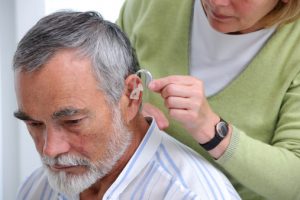
This is the case of a recent discovery made by the researchers at MIT, Brigham and Women’s Hospital, and Massachusetts Eye and Ear who found a similarity between structural support cells in the cochlea and intestinal stem cells while studying regeneration of the intestinal cells. Such similarity implied a possibility of cellular regeneration in the cochlea—just as it happens in the intestine—giving hope for a hearing loss cure.
A hope for reversing hearing loss
In a mouse model, researchers exposed cochlear cells to a drug cocktail they used on intestinal cells to test if they could transform them into hair cells of the inner ear that are capable of processing sound. To the excitement of the researchers—and sensorineural hearing loss sufferers—it worked!
Sensorineural hearing loss is one of the most common types of hearing impairment among the 48 million Americans who have trouble hearing. One of the primary cause of this type of hearing loss is the damage of hair cells of the inner ear, which may be simply a result of aging processes or exposure to loud noises, either sudden or long term. These hair cells are endowed with a key function: converting the sound waves entering the ear into electrical impulses that the brain can recognize and process. Unfortunately, human hair cells do not regenerate, meaning once they’re damaged, the resulting hearing loss is permanent and cannot be reversed.
Of course, modern medicine is trying its best to improve the quality of life of those who suffer from this kind of hearing impairment. The current go-to treatments are hearing aids or cochlear implants, which amplify the sounds to be better picked up by the patient’s remaining sense of hearing. It’s true, today’s hearing assistive devices are incomparable with their predecessors from 10 years ago in terms of effectiveness, but with all the technology involved, they still cannot fully restore hearing. This is why this recent discovery bears so much significance for both audiologists and their patients.
The researchers say the drugs will probably be administered in the form of injection into the middle ear, similar to the delivery of medications for ear infections. However, the revolutionary therapy has a long way to go before it reaches your local hospital or clinic. Clinical trials, safety testing, and a rigorous approval process from the FDA are in order and can take years. Human trials of the new treatment may begin within the next 18 months.
While the distant future may not seem as gloomy anymore, taking care of your hearing should still be among your priorities. Don’t skip that annual checkup with the audiologist and don’t delay seeing your doctor whenever you notice a change in the quality of your hearing. Prompt action can greatly improve your hearing and prevent many ailments associated with hearing loss, including depression and anxiety, cardiovascular problems, and even diabetes.
Related: 5 tips to prevent hearing loss as you age